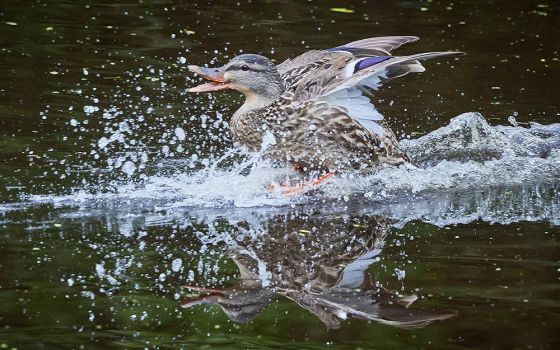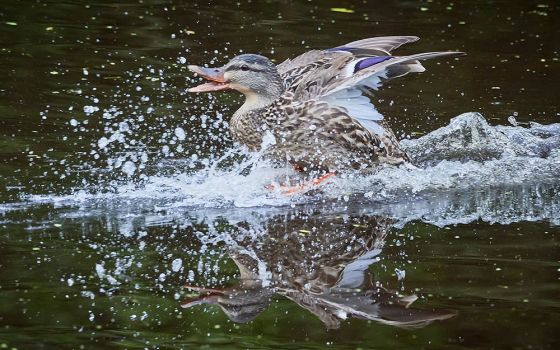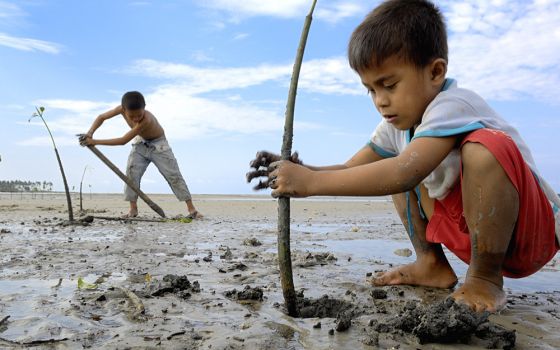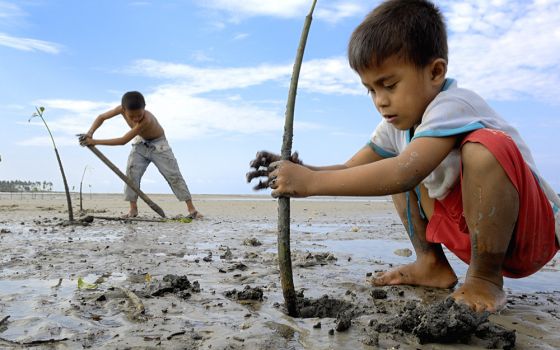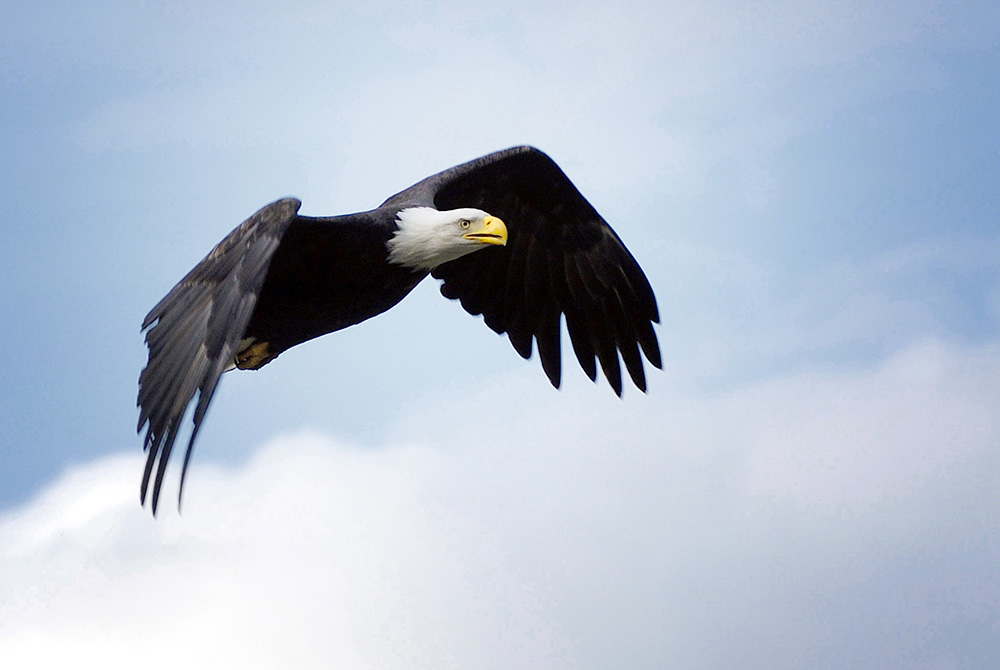
Bald eagles have come back from the brink of extinction since the 1960s. (Paul Jeffrey)
Editor's note: This Season of Creation, join award-winning photographer Paul Jeffrey for "Lens on Creation" as he examines the world through the lens of his camera and his faith. Sign up here to receive Jeffrey's reflections in your inbox every Monday, Wednesday and Friday from Aug. 31 to Oct. 4.
When I was a kid in the 1950s, I loved to ride my bike in the summer behind the truck that sprayed a cool mist of DDT to kill the mosquitoes in our neighborhood. I wasn't the only one back then who loved DDT. Yet that love affair with pesticides had devastating consequences, as Rachel Carson documented in her book Silent Spring, published in 1962.
I never saw an eagle as a kid, despite growing up in the Pacific Northwest. Raptors in general had been disparaged for decades, often facing organized campaigns of extermination, but eagles in particular, perched at the top of the food chain, suffered the effects of indiscriminate DDT use. Bald eagles, the national symbol, were especially at risk.
We have a terrifying ability to mess up God's creation. But we also have the ability to confess our environmental sin and work to restore the integrity of the planet which we share with an amazing variety of animals and plants.
In the United States, we did that with the Endangered Species Act, and internationally with the Migratory Bird Treaty Act, both of which granted protection to bald eagles. And the United States banned most uses of DDT in 1972. As a result, the bird's recovery has been dramatic. In 1963, there were only 487 breeding pairs of bald eagles in the 48 contiguous U.S. states. By 2009, there were more than 16,000 breeding pairs of bald eagles in the same area.
Now I see eagles all the time. And every time I do, I remember my childhood without eagles. The magnificent birds have become for me a symbol of hope. Hope that we can mend our destructive ways, in the spirit of a restorative Jubilee for the earth. Hope that we can be faithful stewards of God's Creation. Hope that we can take seriously the challenge that Pope Francis gives us in "Laudato Si'": "We read in the Gospel that Jesus says of the birds of the air that 'not one of them is forgotten before God' (Lk 12:6). How then can we possibly mistreat them or cause them harm?"
For reflection and action:
The final document of the 2019 synod for the Amazon defined ecological sin as "an action or omission against God, against one's neighbor, the community and the environment. It is sin against future generations, and it is committed in acts and habits of pollution and destruction of the harmony of the environment." Where do you see ecological sin in your neighborhood, community or region? How can restitution be made?
[Paul Jeffrey is a founder of Life on Earth Pictures and lives in Oregon. You can follow him on Instagram.]
Advertisement




